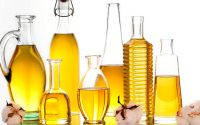Production of Cottonseed Oil
Cottonseed oil is a kind of oil extracted from cottonseed. Cottonseed oil is one of the common edible oils in people’s daily life. The preparation of cottonseed oil usually adopts pretreatment leaching and refining process.
Cottonseed pretreatment:
Cottonseed, cleaning, breaking, softening, rolling, steaming, and leaching.
Cottonseed pretreatment process
1. Cleaning of cottonseed
Remove impurities from cottonseed by various cleaning equipment. Cleaning equipment includes: magnetic separator, vibration cleaning screen, specific gravity stone remover and so on.
2. Crushing
Commonly used crushing equipment are roller crusher, hammer crusher, disc shell machine and so on.
3. By adjusting the moisture and temperature of cotton seeds, the plasticity of cotton seeds is increased, and good operation conditions are created for rolling and steaming. The cotton seed was heated to 50 ~ 70 ℃ in a horizontal softening pot to soften the cotton seed and improve the plasticity of the cotton seed material.
4. Rolling
The cell wall of cottonseed oil is destroyed and the billet becomes flake by using the embryo rolling mill, which greatly shortens the oil discharge from the cottonseed, and thus improves the oil production speed and oil yield.
Characteristics of cottonseed oil extraction process:
1.The yield of oil is high. The residual oil in the oil can be controlled below 1% under the extraction method.
2.The quality of the meal is good.
3.Low processing cost and low labor intensity.
Classification of cottonseed oil extraction equipment:
- Immersion type: tank group extractor, u drag chain type and Y type extractor.
- Spray type: crawler extractor.
- Hybrid: flat and circular extractor.
Refining process of cottonseed oil:
Cottonseed oil, hydration, degumming, alkali refining, deacidification, adsorption decolorization, vacuum deodorization, filtration, and finished cottonseed oil.
Cottonseed oil refining process:
- Hydration degumming: Using hydrophilic groups contained in lipid molecules such as phospholipids, a certain amount of hot water or dilute aqueous solutions of acid, alkali, salt and other electrolytes are added to oils and fats to make colloidal impurities swell and condense, precipitate from oils and separate from oils and fats.
- Alkali refining deacidification: the use of alkali to neutralize free fatty acids in oils and fats, to produce fatty acid salts (soaps) and water, soap adsorption of some impurities and precipitation from the oil separation.
- Adsorption and decolorization: Adsorbent is used to adsorb pigment and other impurities in oil and fat, and the adsorbent and impurities are filtered out to achieve the purpose of decolorization and purification. Adsorptive decolorization, heating decolorization, oxidation decolorization and chemical reagent decolorization are the most widely used decolorization methods.
- Vacuum deodorization: Deodorizing is mainly a removal of odorous substances from cottonseed oil. Deodorization methods include vacuum steam deodorization, gas injection, hydrogenation, polymerization and chemical deodorization.


